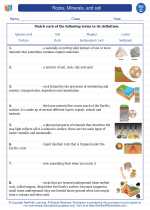Land
Land is the solid surface of the Earth, consisting of various types of terrain such as mountains, valleys, plains, and plateaus. It is an essential component of the Earth's natural resources and ecosystems.
Composition of Land
Land is composed of various materials including soil, rocks, minerals, and organic matter. The type of land is determined by its composition and structure, which can influence its uses and characteristics.
Formation of Landforms
Landforms such as mountains, canyons, and plains are formed through geological processes such as erosion, volcanic activity, and tectonic movements. These processes shape the surface of the Earth over millions of years.
Uses of Land
Land serves numerous purposes including agricultural, residential, commercial, industrial, and recreational uses. It provides a habitat for diverse plant and animal species and supports various human activities.
Conservation of Land
Conserving land is essential for maintaining ecological balance, preserving biodiversity, and ensuring sustainable use of natural resources. Efforts such as reforestation, land reclamation, and land-use planning are crucial for land conservation.
Study Guide
- What are the different types of terrain found on land?
- How are landforms formed?
- What are the various uses of land?
- Why is conservation of land important?
- Describe the composition of land.
Understanding the concept of land and its significance in our environment is crucial for appreciating the Earth's natural features and promoting sustainable land management practices.
.◂Science Worksheets and Study Guides Third Grade. Rocks, Minerals, and soil
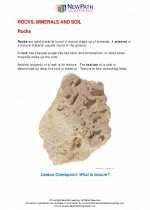
 Activity Lesson
Activity Lesson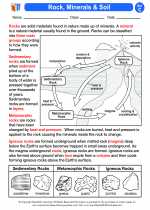
 Worksheet/Answer key
Worksheet/Answer key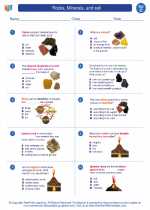
 Worksheet/Answer key
Worksheet/Answer key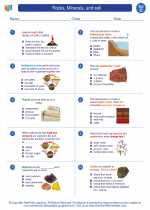
 Worksheet/Answer key
Worksheet/Answer key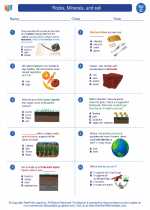
 Worksheet/Answer key
Worksheet/Answer key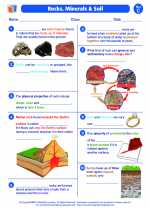
 Vocabulary/Answer key
Vocabulary/Answer key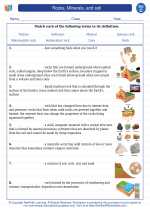
 Vocabulary/Answer key
Vocabulary/Answer key